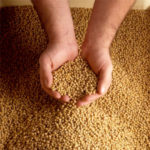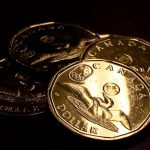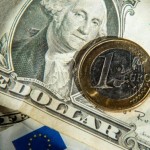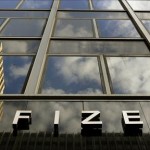Australian dollar weakened to lows unseen in three months against its US counterpart on Wednesday, as Australias Gross Domestic Product increased at a lesser rate than projected during the third quarter of the year, which added to the case that the Reserve Bank of Australia (RBA) may consider to cut borrowing costs further in order to re-balance nations economy, shifting the focus on a services-led growth, as investment boom in the sector of mining was fading.
AUD/USD fell to a daily low at 0.9033 at 7:15 GMT, also the pairs lowest point since September 3rd, after which consolidation followed at 0.9036, plunging 1.09% for the day. Support was likely to be received at September 3rd low, 0.8972, while resistance was to be encountered at current session high, 0.9141.
According to a report by the Australian Bureau of Statistics, nations Gross Domestic Product grew at a lesser than expected pace during the third quarter of the year compared to the preceding quarter. The GDP figure rose 0.6% in Q3, following a revised up 0.7% growth in Q2, while preliminary estimates pointed a 0.7% gain in the third quarter.
Australias annual GDP expanded 2.3% in Q3, which marked a third consecutive quarter during which economic growth remains below 2.5%, following a revised down 2.4% growth from a 2.6% pace previously in the second quarter of the year. The annual GDP for Q3 came also below experts median estimate of a 2.6% growth. A major factor behind these figures has probably been the fact that Australian households restrained their spending and focused on saving during the third quarter. These data points suggested that the Reserve Bank of Australia may be prompted to introduce additional measures in order to stimulate consumer spending in the country amid waning investment boom in the mining industry and as the government budget has deteriorated significantly in recent months, according to Treasurer Joe Hockey.
“It’s a disappointing GDP number and we’re currently running significantly below trend, so clearly the Australian economy requires further stimulus,” said Robert Rennie, global head of foreign-exchange and commodity strategy at Westpac Banking Corp. in Sydney, cited by Bloomberg News. “The Aussie has weakened but we’re beginning to show signs of basing in the low 90s. I think the Aussie remains in the 90 to 95-cent range.”
The GDP report came out one day after at its monthly policy meeting the Reserve Bank of Australia decided to keep the benchmark interest rate without change at the current record low level of 2.50% in line with the median estimate of experts.
RBA Governor Glenn Stevens used the same tone as at bank’s previous meeting, stating that the national currency was “still uncomfortably high” and that a lower Aussie “is likely to be needed to achieve balanced growth in the economy”.
The yield on Australian three-year government bonds decreased four basis points, or 0.04 percentage point, to reach 3.08%, which was the largest drop since November 14th. The yield on nations 10-year government bonds fell two basis points to reach 4.3%.
The Australian dollar will probably depreciate toward 80 US cents in the long-term, as the nation shifts to lower export prices relative to import prices amid weakening demand for its commodity shipments from China, according to Jeremy Lawson, chief economist at Standard Life Investments, in a briefing in Sydney, Bloomberg imparted.
Meanwhile, ADP Research Institute will probably report later in the day that private sector companies in the United States added 170 000 job positions in November, which would be the fastest pace in five months, according to the median estimate of economists participated in a survey. In October economy managed to add 130 000 jobs.
In addition, the Institute for Supply Management (ISM) is expected to report that its index, gauging activity in the sector of services in the US, slowed down to a reading of 55.0 in November, after it stood at 55.4 in October. The official result is due at 15:00 GMT today.
Elsewhere, the Australian dollar was losing 1.17% on a daily basis against the euro, with EUR/AUD cross trading at 1.5051 at 8:09 GMT. AUD/NZD pair fell 0.51% to trade at 1.1033 at 8:09 GMT, or the lowest point since October 2008.





